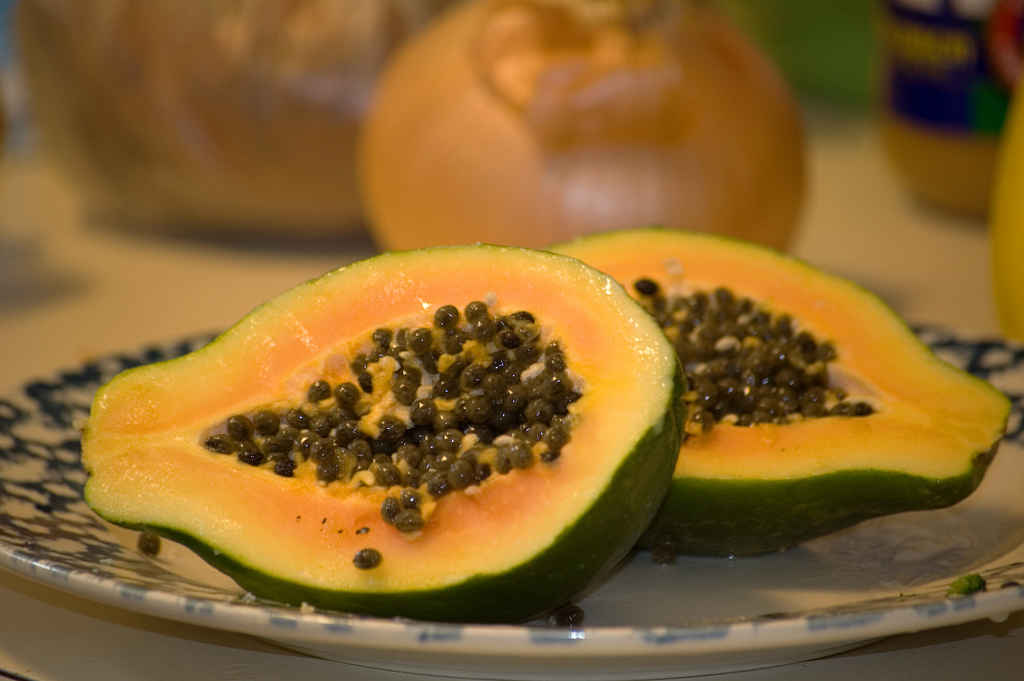The papaya is one of the 22 accepted species in the genus Carica of the family Caricaceae. It’s believed to have originated somewhere in the tropics of the Americas, perhaps from southern Mexico and neighboring Central America. Take a look below for 25 more interesting and fascinating facts about papayas.
1. Native to Mexico and northern South America, papaya has become naturalized throughout the Caribbean Islands, Florida, Texas, California, Hawaii, and other tropical and subtropical regions of the world.
2. Papaya is a tree-like herb that can reach heights of 16 to 33 feet.
3. Papaya tree leaves are green, large and divided in seven lobes. They’re spirally arranged and located on top of the plant.
4. Papaya develops white flowers with five petals. The flower can contain male, female or both types of reproductive organs. The type of flower depends entirely on the variety of the tree and the environmental temperature.
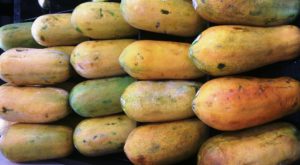
5. Papaya has a yellow-green skin on the surface and an orange-pinkish flesh underneath it. It has a lot of black seeds located in the middle of the fruit.
6. Hawaiian and Mexican papaya are the two main types of papaya that can be bought around the world. The Hawaiian type is pear-shaped and weighs one pound while the Mexican papaya is heavier but has a less intense taste.
7. Papaya is a rich source of vitamin C and vitamin B. It has beta-carotene, which turns into vitamin A inside the human body.
8. Papaya is mostly eaten raw, but it’s also a popular ingredient of cooked meals such as stews and curries in certain parts of the world.
9. Young papaya leaves can be used for fresh salads or they can be boiled and prepared like spinach.
10. Papaya seeds have a sharp and peppery taste, which is why they’re sometimes used as a substitute for black pepper in some countries.
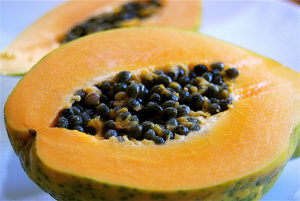
11. Papaya leaves are used in treatment of malaria. Since it has antiviral properties, it’s also sometimes used in the treatment of Dengue fever.
12. Harrison Ford was once treated with injections of papaya due to a spine injury incurred during the filming of the Indiana Jones movie.
13. A diet based on high quantities of papaya may change the color of the skin on the palms and soles to yellow. This medical condition is known as carotenemia and the skin returns to normal as soon as the person stops eating papaya.
14. Unripe papayas contain latex, which can cause an allergic reaction in sensitive people.
15. The stem and bark of the papaya tree is used in making ropes.
16. Both green papaya fruit and the plant’s latex are rich in papain, a protease used for tenderizing meat and other proteins, as practice currently by indigenous Americans and people of the Caribbean region.
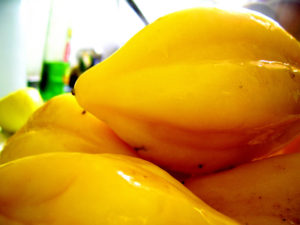
17. The papaya plant, although mostly referred to as a tree, is actually a giant herb. It’s fast growing and can produce fruit within 6 to 12 months from planting.
18. Papaya is one of the most effective treatments for indigestion. It’s the only fruit that contains papain, an enzyme that has the ability to digest protein.
19. Papaya is sometimes referred to as a “tree melon.” In Australia, the fruit is called “papaw” or “paw paw.”
20. In the 1990s, two genetically modified varieties of papaya were introduced to Hawaii, making papaya the first genetically modified food to be introduced into the United States food supply.
21. In many parts of the world, unripe papaya has been used for centuries by women as a natural contraceptive and to induce abortion. Modern research has confirmed that unripe papaya does indeed work as a natural contraceptive and can induce abortion when eaten in large quantities.
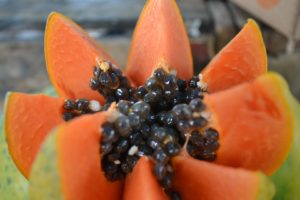
22. Papaya leaves are steamed and eaten in parts of Asia.
23. September is National Papaya Month.
24. Mature papaya is usually harvested once its skin slightly turns yellow.
25. In Thai cuisine, papaya is used to make Thai salads such as som tam and Thai curries such as kaeng som when the papaya fruit is still not fully ripe.

